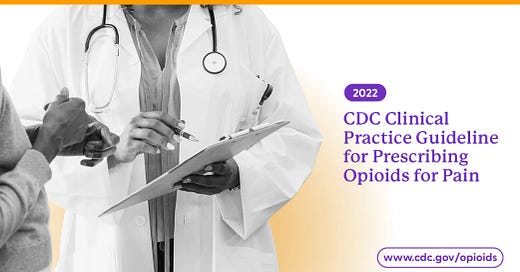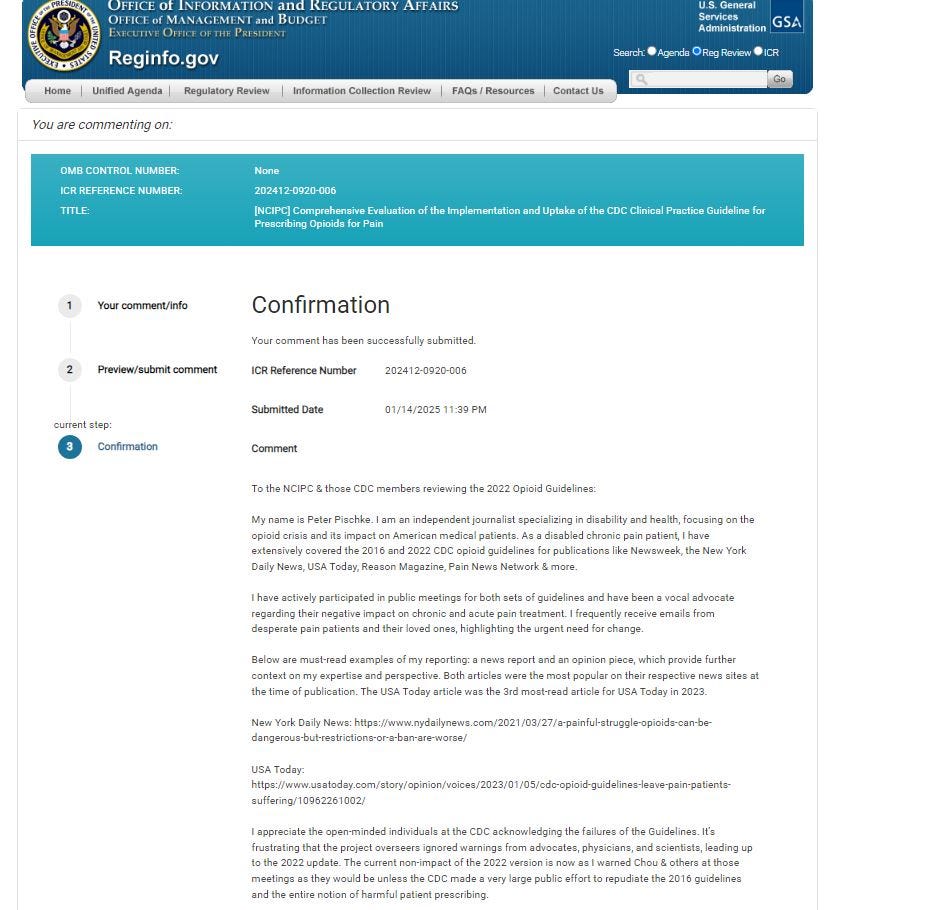My Comment for the official review of the 2022 CDC Opioid Guidelines
Yes, Opioid Prohibition is a bad thing actually
Note: To Submit a comment click here. (til the end of Jan 15 to submit)
To the NCIPC & those CDC members reviewing the 2022 Opioid Guidelines:
My name is Peter Pischke. I am an independent journalist specializing in disability and health, focusing on the opioid crisis and its impact on American medical patients. As a disabled chronic pain patient, I have extensively covered the 2016 and 2022 CDC opioid guidelines for publications like Newsweek, the New York Daily News, USA Today, Reason Magazine, Pain News Network & more.
I have actively participated in public meetings for both sets of guidelines and have been a vocal advocate regarding their negative impact on chronic and acute pain treatment. I frequently receive emails from desperate pain patients and their loved ones, highlighting the urgent need for change.
Below are must-read examples of my reporting: a news report and an opinion piece, which provide further context on my expertise and perspective. Both articles were the most popular on their respective news sites at the time of publication. The USA Today article was the 3rd most-read article for USA Today in 2023.
New York Daily News:
USA Today:
I appreciate the open-minded individuals at the CDC acknowledging the failures of the Guidelines. It’s frustrating that the project overseers ignored warnings from advocates, physicians, and scientists, leading up to the 2022 update. The current non-impact of the 2022 version is now as I warned Chou & others at those meetings as they would be unless the CDC made a very large public effort to repudiate the 2016 guidelines and the entire notion of harmful patient prescribing.
However, no one should be surprised by the poor behavior of CDC members. During the 2021 public meetings, the CDC discouraged participation in Zoom sessions by hiding links, and faking tech issues concerned that patients might harm themselves during the sessions.
Despite public statements, the guideline creators are fully aware of the destruction caused. Opioid prescribing for medical patients is now at its lowest since the 1980s, despite a 40% citizen increase & an aging population.
Surveys and studies find that chronic pain, cancer, and other hard-to-treat patients, like those in hospice, struggle to find medical care since the guidelines' publication. This has accelerated the drug crisis and led to mass self-harm and suicide, despite limp warnings from the CDC. Instead of repudiating the prohibition, the 2022 guidelines cemented it by signaling no negative consequences for health providers abandoning pain patients.
As a journalist and advocate, I encounter daily stories of abandoned patients. As a disabled patient, my quality of life has plummeted since losing access to pain treatment in 2018 due to chronic pancreatitis, photophobia, akathisia, arthritis, and diabetes. Unable to work full-time, I live at the mercy of others with only low-dose tramadol for my pain, facing extensive grilling and threats from medical providers despite having no criminal record, an extensive professional history as a health reporter, and being a member of the LDS faith.
So here we are again—CDC members have developed a conscience after creating a disastrous medical prohibition. I hope the CDC will stick to their newly found convictions.
Peter Vaughn Pischke





